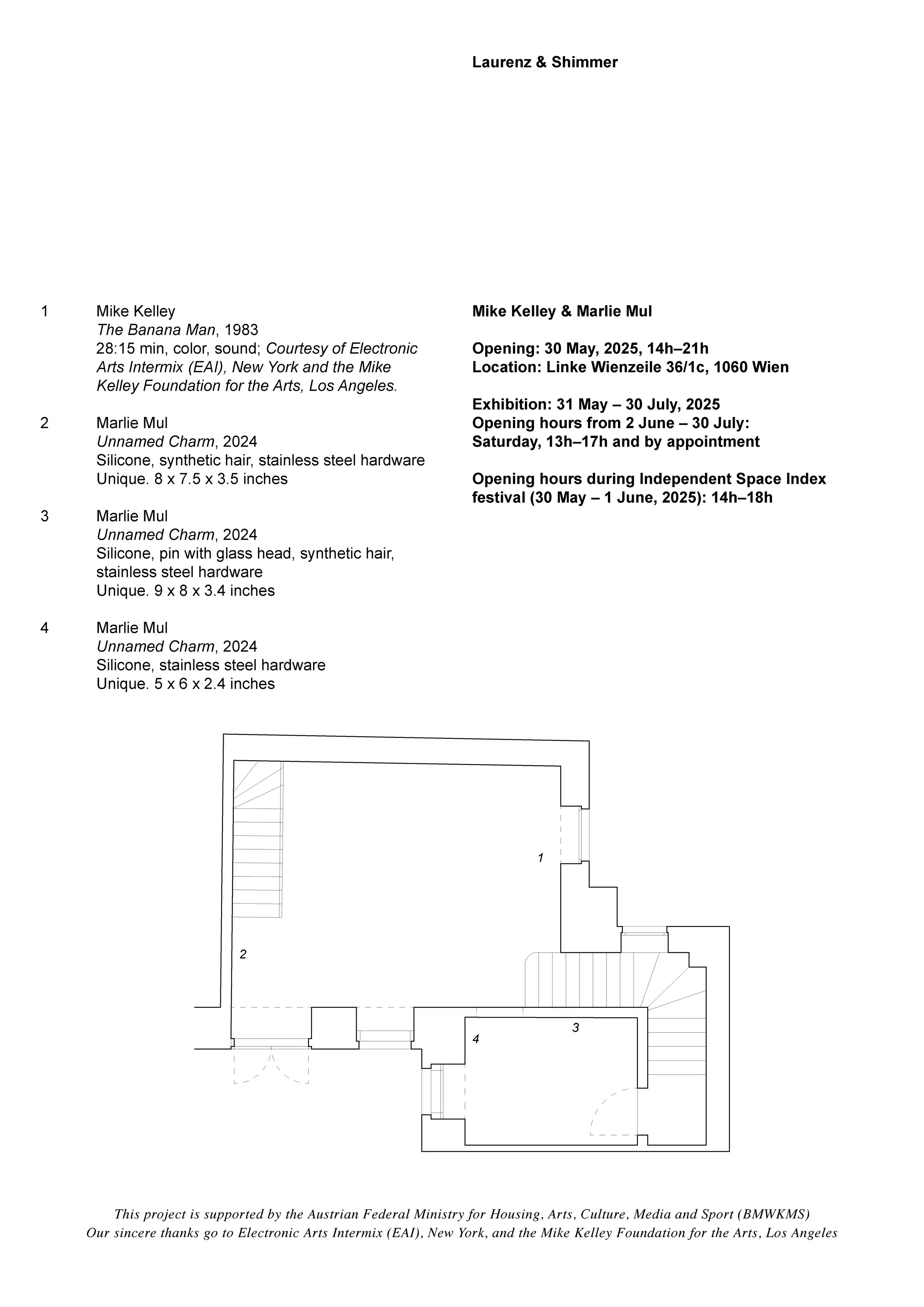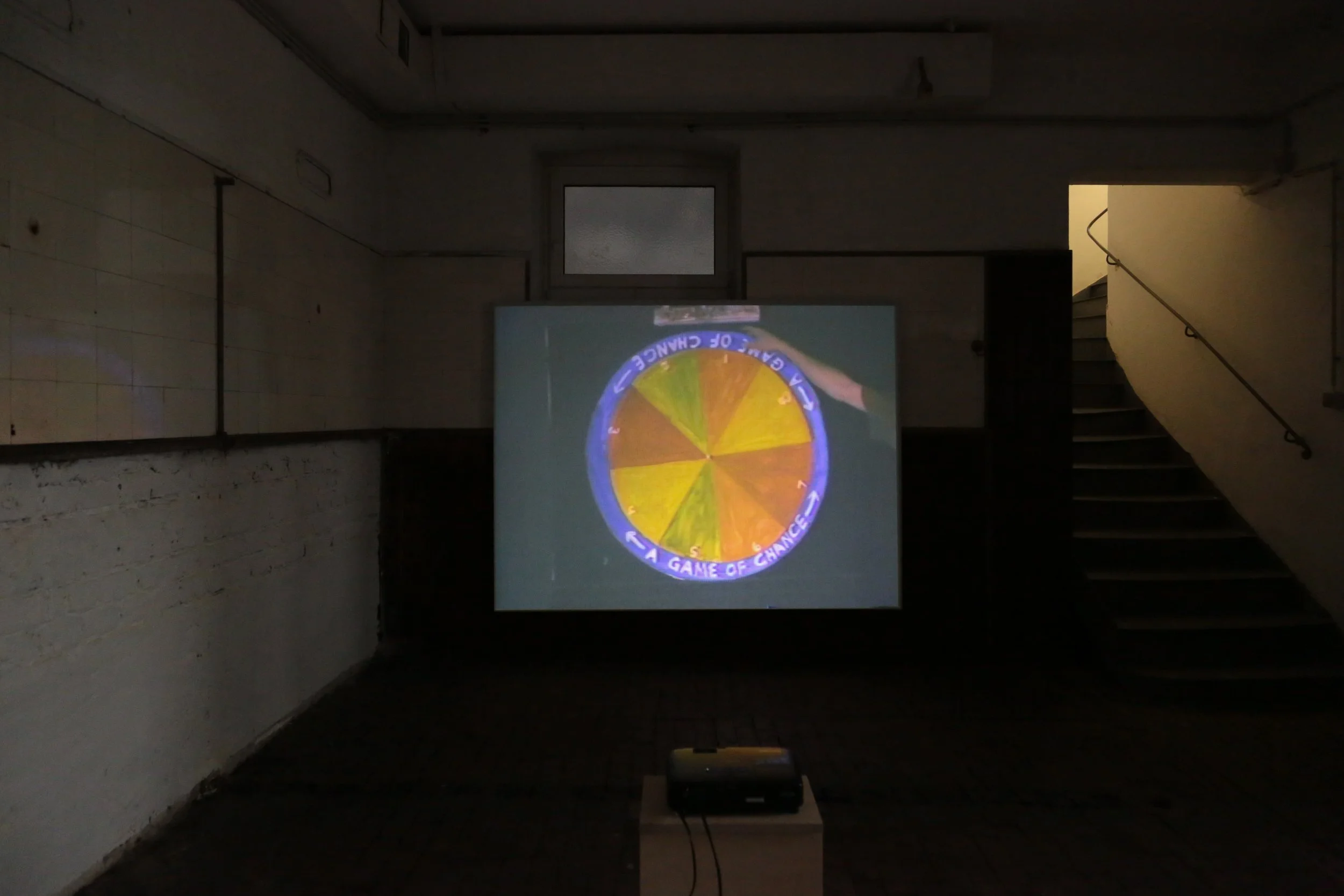Mike Kelley & Marlie Mul
What's the funniest joke in the world?
Written for Mike Kelley & Marlie Mul
By LAURENZ and SHIMMER
200 copies on Pergraphica Ivory Rough 90g/m2 with brown ink.
Download PDF
___
ABOUT THE ARTISTS
Mike Kelley (b. Detroit, 1954, d. Los Angeles, 2012) is widely considered one of the most influential artists of our time. Irreverent but deeply informed, topical yet visionary, Kelley worked in a startling array of genres and styles, including performance, installation, drawing, painting, video, photography, sound works, text, and sculpture. He also worked on curatorial projects; collaborated with many other artists and musicians; and left a formidable body of critical and creative writing. Starting out in the late 1970s with solo performances, image/text paintings, and gallery and site-specific installations, Kelley came to prominence in the 1980s with a series of sculptures composed of common craft materials. Featuring repurposed thrift store toys, blankets, and worn stuffed animals, the Half a Man series focused Kelley’s career-long investigation of memory, trauma, and repression, predicated on what the artist described as a “shared culture of abuse.”
Throughout his career Kelley sought to understand the cultures around him from the bottom up, scouring yard sales and yearbooks for their cast-offs and leftovers. He mined popular culture and both modernist and alternative traditions, which he set in relation to relentless self- and social examinations, by turns dark and delirious. With an inimitable mix of caustic skepticism and temporizing respect, he engaged the languages and assumptions of education, adolescence, crafts and DIY, holidays, pop psychology, parades and rituals, fandom, newspaper reportage, and modes of public address—producing a uniquely sustained address to the conditions and implications of the American vernacular. In more recent years, Kelley’s ambitions widened in conceptual scope and physical scale with Educational Complex (1995), the epic Day Is Done (2005), his Kandors series (2007-2012), and the posthumously completed public work Mobile Homestead (2006-2013), as he addressed architecture, institutions, and “projective reconstruction” using the theory of repressed memory syndrome coupled with (pseudo-) biographic inquiry into his own aesthetic and various social formations.
The Banana Man, Mike Kelley, 1983, 28:15 min, color, sound; Courtesy of Electronic Arts Intermix (EAI), New York and the Mike Kelley Foundation for the Arts, Los Angeles
Marlie Mul’s (b. Utrecht, 1980) artistic practice manifests somewhere in between sculpture, painting, print, fashion, distribution, writing, experiments in branding, the social, the flimsy, and the virtual. References to the flowing, the liquid, the oozing, recur in Marlie Mul’s work on a formal level and metaphoric themes – from her folded paintings, to flaccid silicone works planted with thinning (synthetic) hairs, to facsimile sculptures of rain puddles and enquiries into the history of tobacco smoke. Her work is intricately fabricated while keeping a strong DIY character.
In May 2017 Marlie Mul publicly cancelled a solo exhibition at the Gallery of Modern Art (GoMA) in Glasgow, due to impassable working circumstances, which lead to an advertisement of said cancellation inside the galleries of the museum itself. In the aftermath of that situation, she co-initiated the counter-institutional fanzine ground together with writer and poet Harry Burke, and published the book CANCELLED in 2018. With the project PMS she takes on a form of ‘branding-drag’ that employs the accessible format of the t-shirt as a tool for image circulation and the visualising of community, the brand itself taking as theme the human body’s hormonal ups and downs. She runs HERMANY, a nomadic project space that sets out to blur the specificity of exhibition audiences by continuously changing its content, medium, and location. Hermany has hosted the work of various artists and performers, and was also the project name under which she initiated the collective projects Fashion Café (2019) and Fashion Time (2022) wherein the spectacle of fashion was taken as a starting point for the making and presentation of art works. Since 2021 she works on various series of sculptures intricately made from silicone and (synthetic) hair.
ABOUT THE SPACES
LAURENZ
The projects we realize under Laurenz are often concerned with expanding the classical understanding of exhibition making and look for inspiration in different disciplines. Hosting and working with the existing conditions, often thematizing them and allowing them to take the main role rather than just being a context, is an important part of our collective practice and the way we communicate with artists and cultural practitioners. By focusing on a more discourse-based collective work, we seek to create new and nurture existing relationships within the cultural field. Laurenz, founded in 2020 by Aaron Amar Bhamra & Monika Georgieva
SHIMMER
Located in the Port of Rotterdam, noted for its beautiful sunsets, caused by industrial pollution, SHIMMER is a curatorial studio set within the contradiction of oil-riggers and wind-turbine installing ships. The contradiction of a changing industrial environment informs our adaptive and transformative outlook. Our curatorial style coalesces, collaborates and redefines the methods of making, showing, and disseminating contemporary art. From exhibitions to events, and playlists to publications, we create an intimate space that operates with a ‘studio-like mentality’ where knowledge surfaces from participation and experimentation. We see art as inherently shared, public, and social, and so too are structures like Shimmer, allowing for research and conversations to spark the beginnings (and endings) of artworks and exhibitions. Established in 2018, Shimmer was founded by Eloise Sweetman and Jason Hendrik Hansma.
floorplan
(Photos: fig1-33 Aaron Amar Bhamra / Laurenz)

































